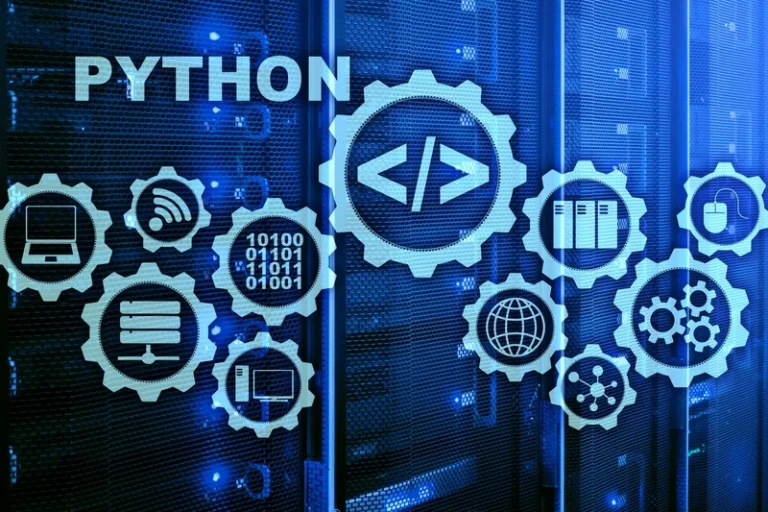How to Measure CI CD Performance with DevOps Metrics TeamCity CI CD Guide
More complex pipelines have additional steps besides the four core ones, such as data synchronization, application and library patching, or archiving information resources. Not every CI/CD process has all these tests, but the goal of continuous testing is always the same. Continuous testing finds problems quickly and alerts the team before a bug causes an issue in production. CI is ideal for big projects with numerous developers working independently on complex applications.
Logs are shaped to provide context that enables robust, fast and easy exploration and workflows. DigitalOcean makes it simple to launch in the cloud and scale up as you grow – whether you’re running one virtual machine or ten thousand. When making these significant decisions, make sure you understand and document the trade-offs you are making. Consult with team members and stakeholders to align the team’s assumptions about what the test suite is responsible for and what the primary areas of focus should be. Otel-cli is a command-line tool for sending OpenTelemetry
traces, which is useful if instrumenting your scripts explicitly when no other implicit
integration is in place.
Automated real-time monitoring for efficient CI/CD pipelines
The main difference between Chef and Puppet is that Chef runs an imperative language to write commands for the server. Imperative means that we prescribe how to achieve a desired resource state, rather than specifying the desired state. That said, Chef is considered to be suitable for the teams dominated by developers, as they are more familiar with imperative languages, like Ruby. The capacity of such infrastructure is allocated dynamically, depending on the needs of the application.
One is to ensure that your synthetic monitoring tests cover a wide variety of transaction types and variables. CI build tools automatically package up files and components into release artifacts and run tests for quality, performance, and other requirements. After clearing required checks, CD tools send builds off to the operations team for further testing and staging. Enable your DevOps teams to perform the frequent code pushes needed to stay agile with real-time monitoring of your CI/CD delivery pipeline.
Business growth
Both are about automating further stages of the pipeline, but they’re sometimes used separately to illustrate just how much automation is happening. The “CI” in CI/CD always refers to continuous integration, which is an automation process for developers. Successful CI means new code changes to an app are regularly built, tested, and merged to a shared repository. It’s a solution to the problem of having too many branches of an app in development at once that might conflict with each other. CI/CD operations issues may also make it difficult to test each release against a wide variety of configuration variables. Inefficient CI/CD operations (such as slow builds, or messy handoffs of new code from developers to the software testing team) hamper your inability to test software completely before you deploy.

Common code validation processes start with a static code analysis that verifies the quality of the code. Once the code passes the static tests, automated CI routines package and compile the code for further automated testing. CI processes should have a version control system that tracks changes so you know the version of the code used. These dashboards display outage minutes by application and the average time it takes to restore an application from a failure to success state. You can use the custom filter to filter data by application or time period. These dashboards help DevOps leaders correlate change activity to system stability, track and identify opportunities to improve the stability of applications.
Observability for CI/CD administratorsedit
Changes that pass the requirements of one stage are either automatically deployed or queued for manual deployment into more restrictive environments. Early stages are meant to prove that it’s worthwhile to continue testing and pushing the changes closer to production. The “CD” in CI/CD refers to continuous delivery and/or continuous deployment, which are related concepts that sometimes get used interchangeably.
- Having to roll back a problematic release is a big deal that may disrupt users, especially if it means taking away new functionality that has already been deployed.
- There’s also a lot of upfront investment, though, since automated tests will need to be written to accommodate a variety of testing and release stages in the CI/CD pipeline.
- You’re delivering changes of all types into a live environment all the time; you can ship configuration changes, infrastructure changes—everything!
- CI/CD tests and deploys code in environments, from where developers build code to where operations teams make applications publicly available.
- CircleCI released standardized orbs for popular pipelines so individual teams can easily get started with CI/CD using popular tools that have plenty of documentation and setup guides.
- CD is part of DevOps, which helps shorten the software development lifecycle.
Analyze the skillset of your team and decide which members of a team will be working with these tools. As we mentioned, the CI/CD tools will differ in languages available for programming and configuration methods. If your DevOps team is development-dominant, imperative methods are preferred. SonarQube offers the same functionality with 27 programming languages available. It integrates with most CI/CD tools and ensures continuous code testing for the team.
Example CI/CD workflow
The deployment automatically launches and distributes software to end users. The automation tools move the tested and integrated software to places where it can be deployed to end users, such as an app store. Continuous delivery is the interim step of a software release pipeline that begins with continuous integration and ends with continuous deployment. The goal of these stages is to make small changes to code continuously, while building, testing, and delivering more often, quickly and efficiently.

While in continuous deployment, pipelines deploy code automatically and constantly. Continuous integration (CI) comprises various processes that prepare code for deployment in DevOps. Build entails downloading source code and files from a central repository, compiling them, and preparing code for deployment. ci cd monitoring Automated tests run once an engineer commits their code to the repository. CI is meant to create an automated pipeline that will ship deployment-ready code. Another TeamCity feature worth mentioning is its build history, which helps developers quickly pinpoint the root causes of issues.
Continuous monitoring and observability for a CI/CD pipeline
Instead, it’s important to keep several factors in mind as you plan a synthetic monitoring strategy. CI/CD tests and deploys code in environments, from where developers build code to where operations teams make applications publicly available. Environments often have their own specific variables and protection rules to meet security and compliance requirements. For IT teams adopting DevOps, Splunk software helps improve the velocity, quality and business impact of app delivery. Unlike other solutions that focus on discrete release components, Splunk provides real-time insights across all stages of the delivery lifecycle.
If any deployments fail, Harness will automate the rollback to the last working version of the app without any need for user interaction. Recently, the team behind Harness has expanded this feature to run 24/7 in case these anomalies surface hours after the deployment or at times when user traffic is higher than average. Once you’ve deployed a modern CI/CD pipeline, you’ll likely realize that your existing tools and processes in your developer workflow will also need to be modernized. One area that you’re likely to very quickly realize needs a lot of attention is testing. In this blog on Logz.io, John Fahl says that the real key to reaching CD is creating rich testing that gives you confidence in your rapid release schedule. If your team is deploying daily or multiple times a day and your current testing practices take hours to run or are set to run overnight, your testing won’t be able to keep up with the deployments.
Code change volume dashboards
Jenkins can be run on a variety of operating systems, including Windows, Mac OS X, and Linux, and it can be deployed on-premises or in the cloud. Its user interface is web-based, and it provides a rich set of features for managing jobs, nodes, and builds. In practice, continuous deployment means that a developer’s change to a cloud application could go live within minutes of writing it (assuming it passes automated testing). This makes it much easier to continuously receive and incorporate user feedback.
